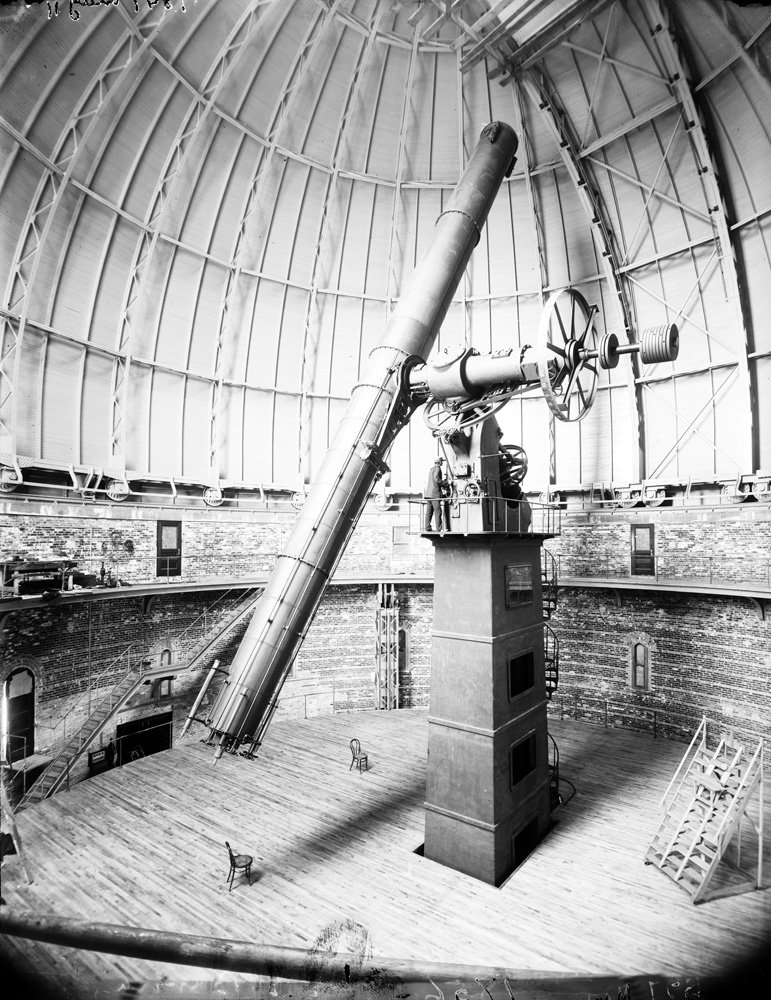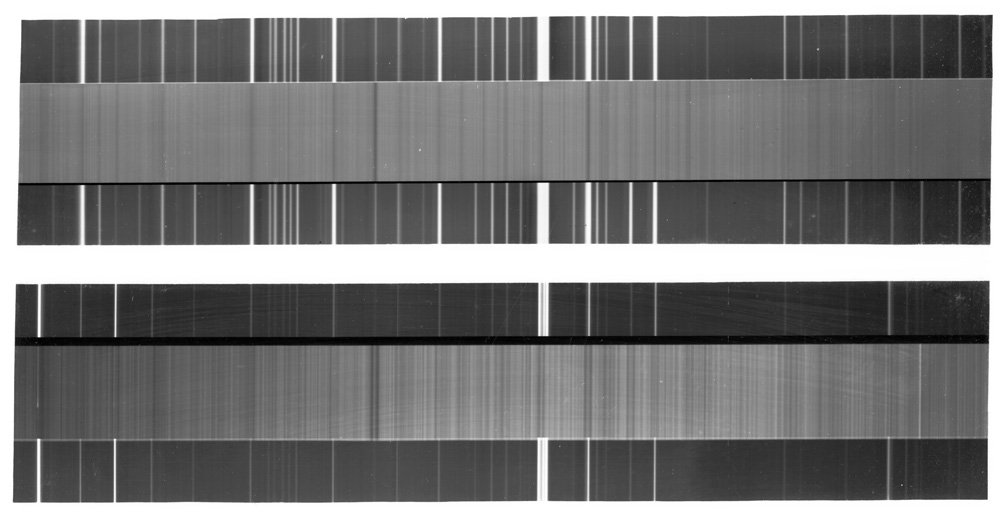Astrophysics
Astrophysicists work to determine the physical nature of stars and other celestial bodies. They use their knowledge of terrestrial physics to interpret astronomical data. Today, astrophysicists use sophisticated instrumentation and computer-aided analysis in their research. But in the early twentieth century, astrophysics was an emerging field and stellar spectra were the primary sources of astrophysical information.
Spectra are made by splitting light into its constituent wavelengths using a disperser such as a prism or a diffraction grating. Think of a rainbow—a spectrum of visible light.
The advent of photography made it possible to capture spectra permanently on glass plates. These spectra could then be studied in extreme detail by using measuring engines—including the one to your right in the wall case. This made it easier to study what astronomical objects are made of and to determine their radial velocities—the speed at which they moved in a direction away from or towards the Earth.


